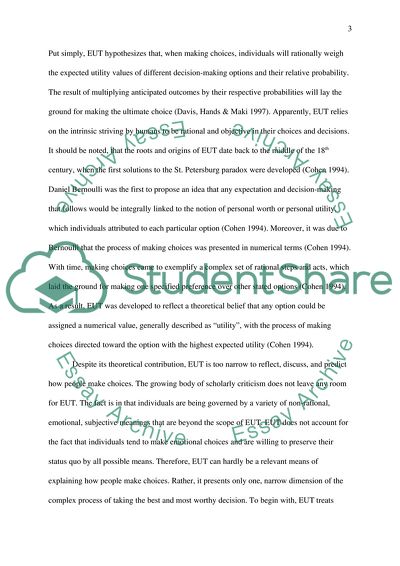Cite this document
(Expected Utility Theory Coursework Example | Topics and Well Written Essays - 3000 words - 1, n.d.)
Expected Utility Theory Coursework Example | Topics and Well Written Essays - 3000 words - 1. Retrieved from https://studentshare.org/social-science/1747932-is-expected-utility-a-good-theory-for-explaining-how-people-make-choices
Expected Utility Theory Coursework Example | Topics and Well Written Essays - 3000 words - 1. Retrieved from https://studentshare.org/social-science/1747932-is-expected-utility-a-good-theory-for-explaining-how-people-make-choices
(Expected Utility Theory Coursework Example | Topics and Well Written Essays - 3000 Words - 1)
Expected Utility Theory Coursework Example | Topics and Well Written Essays - 3000 Words - 1. https://studentshare.org/social-science/1747932-is-expected-utility-a-good-theory-for-explaining-how-people-make-choices.
Expected Utility Theory Coursework Example | Topics and Well Written Essays - 3000 Words - 1. https://studentshare.org/social-science/1747932-is-expected-utility-a-good-theory-for-explaining-how-people-make-choices.
“Expected Utility Theory Coursework Example | Topics and Well Written Essays - 3000 Words - 1”, n.d. https://studentshare.org/social-science/1747932-is-expected-utility-a-good-theory-for-explaining-how-people-make-choices.


